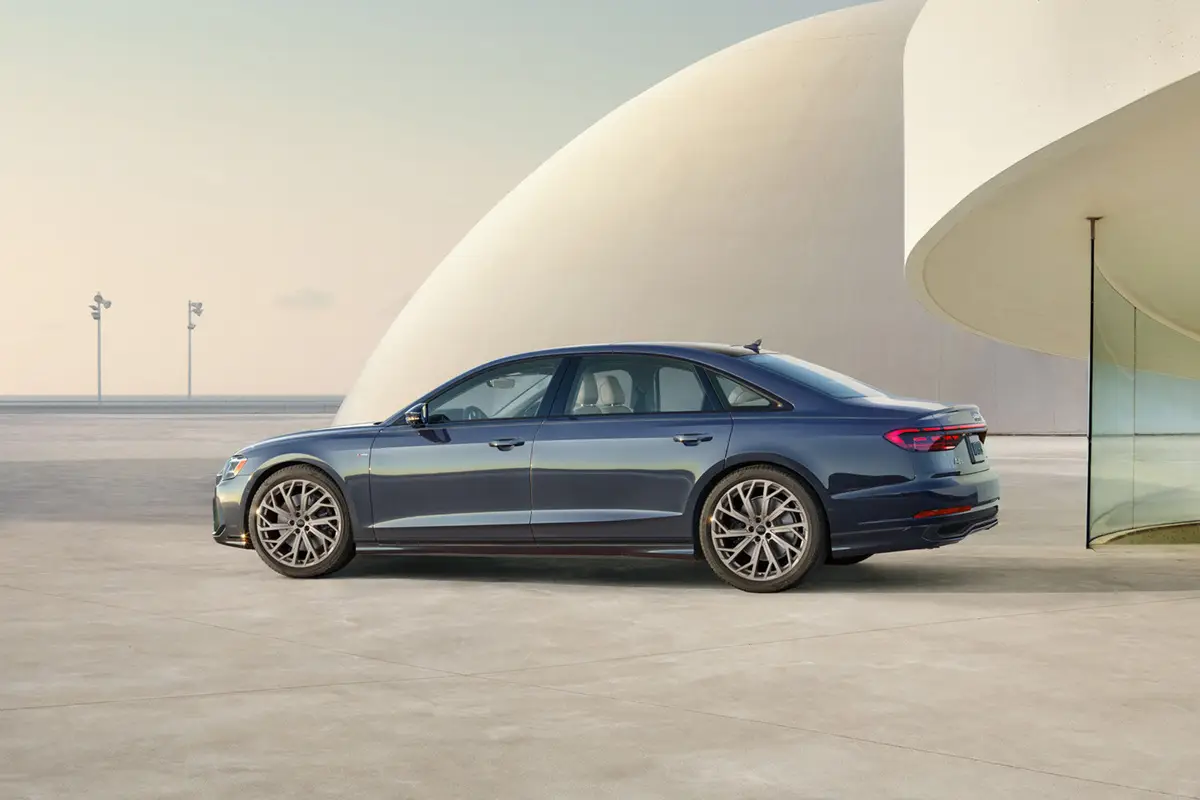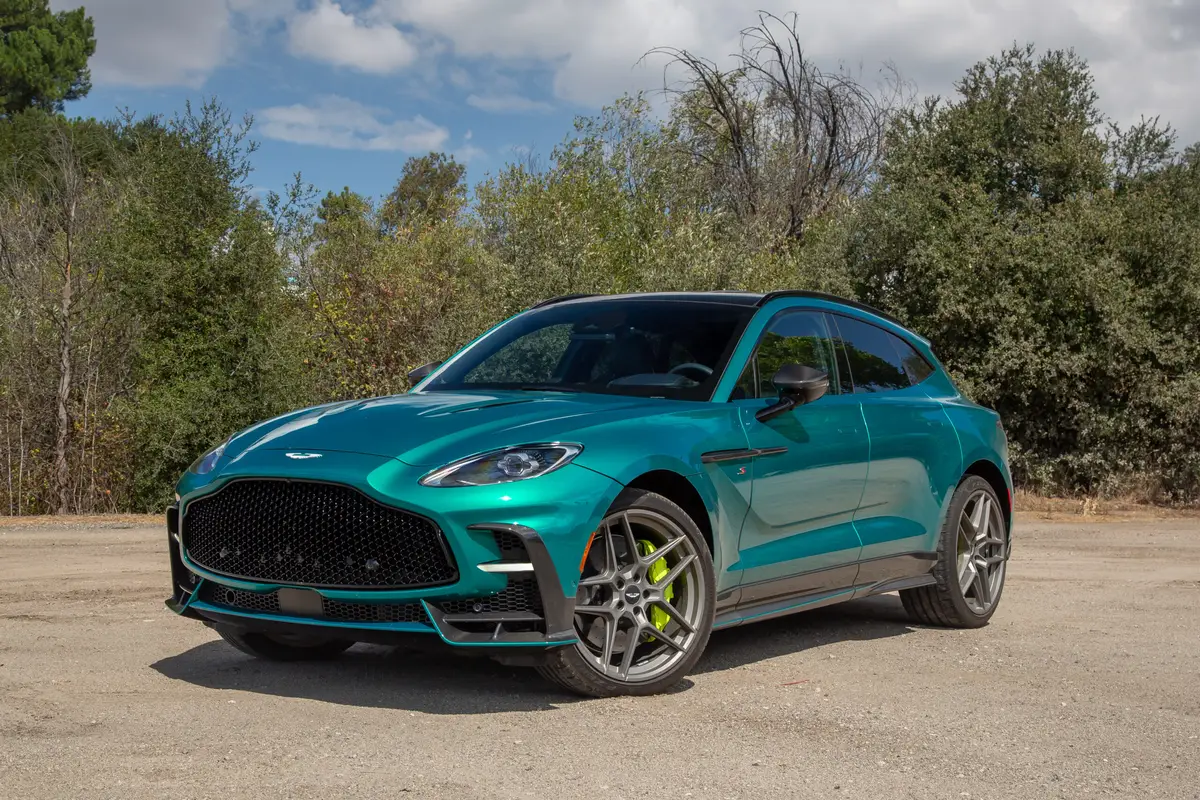washingtonpost.com's view
SUV Is More Beast Than Beauty
2004 Nissan Armada
The 2004 Nissan Armada is a sport-utility vehicle in three parts. That is not a good thing.
The wide front end is different from the narrow middle, which is different from the oddly tapered rear. Visually, it is the motorized version of a dysfunctional family held together by instant necessity, rather than bound together by love.
The necessity in this case is platform engineering. That means using the same platform — chassis, engine, transmission and drive-wheel arrangement — to build discernibly different vehicles.
All car companies use platform engineering. At least, they employ some version of it. The objective is to reduce onerous production costs, which can run into billions of dollars for a completely new vehicle or vehicle line.
My favored Mini Cooper, for example, uses many elements of BMW’s 3-Series cars. The Chevrolet Malibu sedan and Malibu Maxx wagon share a platform with the Saab 9-3. Take a good look at almost any Acura. Beneath its skin, you’ll find a Honda, such as the Honda Pilot SUV, which is the mechanical and structural twin of the Acura MDX.
This platform-sharing business often is very successful. Rare is the ordinary consumer who knows that the pricey Audi TT roadster is in many ways the structural and mechanical sibling of the more affordable Volkswagen New Beetle.
But when something goes wrong with platform engineering, the results can be abysmal. The tested Nissan Armada (LE four-wheel-drive) and its upper-class sibling, the Infiniti QX56, are cases in point.
Both the Armada and QX56 are built on the excellent, highly competitive full-size Nissan Titan pickup truck platform. But what succeeds as a pickup here just doesn’t make it as an SUV. The problem is a conflict of intention.
The Titan represents Nissan’s first foray into the brutally competitive world of full-size pickups, long dominated by the likes of the Ford F-Series, Chevrolet Silverado and Dodge Ram 1500. To gain a share of that field, Nissan could not introduce a wimp. It had to bring a big, bad, bold, kick-butt pickup that made both a visual and performance statement: “I’m here. I’m going to take a lot of what you’ve got. I’m staying. Get used to it.”
But translating that statement into what is supposed to be a family-oriented, socially friendly SUV is a bit of a problem. The result is aptly named Armada, which has a front end that says, “I’m going to tear up the neighborhood.” It has a middle that appears to be an automotive petition for membership in the PTA or on the church parish council. The rear end appears to be a wandering teenager in search of meaning in all the wrong places.
The interior is substantially more consistent and almost commendable. It provides comfortable seating for seven people — eight with a minor squeeze. The second- and third-row seats fold flat, c reating a humongous cargo space. There are cup holders aplenty. I counted 14 in the tested Armada LE 4WD, including a few actually designed to accommodate two-liter bottles.
Clearly, then, the Armada is intended more for families than it is for combat at construction and demolition sites. Any remaining doubts of that are erased by the optional DVD Entertainment System, which includes a roof-mounted video screen (behind the driver’s seat, of course), a 10-speaker Bose sound system and two wireless headphone sets.
You will need those headphones.
Both the tested Armada and Infiniti QX56 were affected by a tympanic rumbling of the roof that made naked-ear enjoyment of the audio entertainment system all but impossible. There was a rumble-rumble-rumble at low speeds that increased to an irritating hum on acceleration. In addition, the grumble-roar from Nissan’s 5.6-liter, 305-horsepower V-8 — so forceful and so welcome in the Titan pickup truck — proved to e nwanted accompaniment in the fully enclosed environment of the Armada.
Ah, but the power of it all was quite enjoyable. Unlike many full-size SUVs, the big-engine Armada launches instead of lumbers when asked to run. In that regard, it brings a smile — a happy expression that lasts all the way to the gas pump, where, at today’s fuel prices, the grin quickly turns to grimace.
Nuts & Bolts
Upside: The Armada has the carrying capacity and overall utility of the world’s best minivans. It also comes with the emotional appeal of a mood ring. Touch the front end, and you’re ready to fight. Touch the middle, and you’re willing to negotiate. Touch the rear, prepare for retreat.
Ride, acceleration and handling: Excellent acceleration. But the Armada is undeniably truck-like in ride and handling. That’s good if you want a pickup feel in an SUV. It’s not if you don’t.
Head-turning quotient: The neighbors, including those who own and love SUVs, hated it. They breathed a sigh of aesthetic relief when the Armada left my driveway. They were disappointed when the Infiniti QX56 arrived, thinking that the Armada had returned in a different color. That the QX56 was an upscale version of the Armada meant little to them. They had only one question: “How long will it be here?”
Body style/layout: The Armada is a front-engine vehicle available with rear-wheel drive or four-wheel drive. It has four side doors and a rear liftgate, including a liftgate window. Depending on the type of seats and seating arrangement chosen, the Armada can accommodate eight people.
Engine/transmission: The Armada is equipped with a 5.6-liter, 32-valve, gasoline-fueled V-8 engine that develops 305 horsepower at 4,900 revolutions per minute and 385 foot-pounds of torque at 3,600 rpm. Regular unleaded gasoline is recommended.
Cargo, towing and fuel capacities: The Armada has a maximum cargo capacity of 97 cubic feet with the second-row and third-row seats folded. With the seats up, it retains an ample luggage capacity of 20 cubic feet. Maximum towing capacity is 9,100 pounds. Maximum payload, the weight of what can be carried onboard, is 1,673 pounds. Gasoline tank capacity is 28 gallons.
Mileage: I barely averaged 17 miles per gallon in mostly highway travel.
Safety: Side air bags, head bags, traction and stability control are standard.
Price: Base price on the tested 2004 Nissan Armada LE 4WD is $40,600. Dealer invoice price on the base model is $36,912. Price as tested is $45,350, including $4,100 in options and a $650 destination charge.
Purse-strings note: Nissan will have to redo the exterior; and the word from deep within the company is that a re-skinning already is in the works. The company also will have to do something about that roof noise, which is a bother. You can bargain on this one, especially considering the bountiful competition in the full-size SUV market.
Latest news



